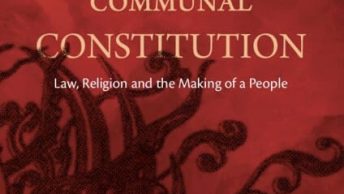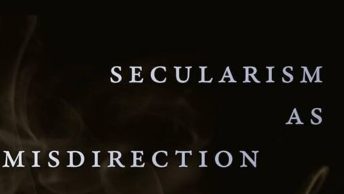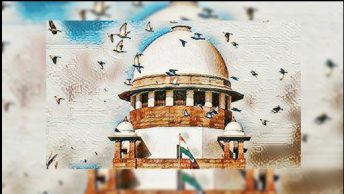Introduction
As the Supreme Court (hereinafter ‘the Court’) considers a curative petition on its decision in Young Indian Lawyers v. State of Kerala (hereinafter Sabarimala), we must remind ourselves that the judicial concept of religion is being reconsidered. This blog post will summarise the findings of my recently published paper, which interpretively outlines the judicial concept of religion that emerges from the Court’s jurisprudence.
The article’s core claim is that the judicial concept of religion is broad in freedom of religion cases and includes a host of theistic, non-theistic, polytheistic and atheistic religions. However, the article demonstrates that the Court, independent of its broad concept of religion in freedom of religion cases, narrows the definition of religion in cases that involve the separation of church and state. I specifically claim that judges narrow the concept of religion through a process I call ‘judicial inculturation’. Judges inculturate religion by deferring to the cultural meaning of a religious belief, symbol, practice, or ritual, thereby removing it from the regulatory ambit of a secularism clause.
For clarity, I will divide this blog post into two parts. The first part will summarise my paper and outline the argument in detail. The second part of this post will offer some brief observations concerning the utility of my argument, considering the pending curative petition challenging the Sabrimala decision.
Summary of the Article
Based on a structural interpretation of the Indian Constitution, my paper starts from the position that the Indian Constitution, to some degree, separates church and state. Drawing on a reading of the Preamble, Articles 25, 26, 27, 28, 29, and 30, the Places of Religious Worship Act 1991, and the Representation of People’s Act 1951, I conclude that the Indian Constitution and certain statutes: a) protect religious freedom as an individual and group right; and b) entrench the separation of church and state in a narrow set of constitutionally enumerated spheres, such as education and electoral politics. Accordingly, I demonstrate that there are two categories of cases that come before the Court. The first category is freedom of religion cases under Articles 25 and 26. The second are cases which implicate constitutional secularism and non-establishment. Based on this context, I interpretively engage with the concept of religion in both kinds of cases and determine that the Court adopts a different concept of religion based on the type of case it is considering.
A) Concept of Religion in Freedom of Religion Cases.
The Indian Court has a three-stage test to determine whether a belief, practice, symbol or ritual is protected under Articles 25 and 26 of the Indian Constitution. The Court first adopts a definitional filter which assesses whether a particular belief, practice, symbol or ritual amounts to a religion based on the criteria adopted by the Court. Once a definitional filter is met, the Court assesses whether the belief in question is essential to the religion through a doctrine called the essential religious practices (‘ERP’) test. Finally, the Court determines whether the belief ought to be limited based on public order, health, or morals.
While some scholars have argued that the concept of religion is narrow and limited to a theistic concept of religion due to the presence of the ERP test, I demonstrate that the test is a second-order inquiry and is accordingly not an evaluative or definitional filter. As such, I show that the definition of religion in India is broad and underpinned by a concept of religion rooted in self-identification.
This paper borrows the characterisation of the self-identification-based concept proposed by Cole Durham and Brett Scharffs, where they argue that:
Under the [self-identification] approach, the person making a religious claim must show not only that she sincerely believes what she claims to believe but that she sincerely considers this belief to be religious. Just as there is no reason to grant free exercise protection based on beliefs the claimant does not actually hold, there is no reason to give deference to a believer’s definition of her beliefs as religious if she herself does not consider them religious. The second limitation inherent to religious freedom is the reverse side of the first, namely that claims of religiosity made for fraudulent or strategic reasons deserve no deference or protection.
In the case of S.P. Mital v. Union of India, the Court clarifies that its concept of religion is based on self-identification. The Court notes that ‘[t]here is no formula of general application [to test whether a belief is religious] … [Religion is] primarily … a question of… consciousness’ (para 20). Additionally, the Court observed that ‘a religion undoubtedly has its basis in a system of beliefs and doctrine which are regarded by those who profess religion to be conducive to their spiritual well-being’ (para 51).
Furthermore, I show that this broad concept of religion encompasses what Winnifred Sullivan calls the ‘lived religion.’ Sullivan argues that ‘[l]ived’ religion shifts the focus to the local, a local that is increasingly transient.’ Based on this, Sullivan argues that on a local level, religion ‘takes place beneath the radar of religious officials and institutions.’ Additionally, Sullivan demonstrates that this localised concept of religion, which is primarily rooted in ritual and practice, is not protected adequately by the US judiciary due to the fact that the judicial concept of religion is not wide enough to consider the sociological complexity of religion. In this paper, I illustrate that the concept of religion in the Indian Supreme Court, particularly through its capacious interpretation of Hinduism, is wide enough to cover the concept of the ‘lived religion’. Notably, the Court’s emphasis on the fact that Articles 25 and 26 protect more than just religious beliefs and extend their protection to practices, rituals, and symbols, demonstrates that the Court protects ritualistic, and symbolic offshoots of mainstream religions. Accordingly, the Court opens itself up to local variations of a religion and protects cultural practices, which emerge solely through community recognition.
B) Concept of Religion in Cases Involving the Separation of Church and State.
In contrast to adopting a broad concept of religion in freedom of religion cases, I found that judges narrow the concept of religion in cases that implicate the separation of church and state. In these cases, judges narrow the concept of religion through a process called judicial inculturation, which occurs when judges hold that religious symbols or practices are cultural as opposed to religious due to their links to the majority religion of the country.
In the paper, I show that the Court inculturates religion in two ways. First, the Court does so by deciding that Hinduism is the genesis of secularism. In the case of Ismail Faruqui, the Court held that: ‘Hinduism is a tolerant faith’ (para 159). Accordingly, the Court clarified that ‘[Hinduisms’ tolerance] had enabled Islam, Christianity, Zoroastrianism, Judaism, Buddhism, Jainism and Sikhism to find a shelter and support [in India].’ Additionally, the Court clarified that the genesis of secularism in India is ‘sarvara dharma sambhav’ and accordingly entrenches the equal treatment of all religions (para 34). From this, we can infer that the Court inculturates Hinduism into the values of the Constitution and accordingly, removes it from the regulatory ambit of Indian secularism. As such, the Court has treated a series of Hindu texts as the source of a constitutional concept of secularism. It has thereby enculturated the Hindu texts into the constitutional culture of India, giving the Hindu faith a cultural meaning by uniquely tying it to the history of Indian secularism and the text of the Constitution.
The second way in which judges inculturate religion is by characterising Hinduism as a ‘way of life’ and not a religion for the purposes of Indian secularism. This narrowing of the definition of religion to exclude cultural practices, symbols, rituals, and beliefs of the Hindu majority constitutes a form of judicial inculturation that privileges the majority religion of the country. A prominent example of this form of inculturation is the case of Aruna Roy v. Union of India, which concerned the constitutionality of a government-funded institution running a compulsory course on the teachings of Guru Nanak, a religious leader of the Sikh faith. In ruling that such a scheme did not violate the Constitution, the Court held that ‘to provide for the academic study of life and teaching or the philosophy and culture of any great saint of India in relation to, or the impact on, the Indian and world civilisations cannot be considered as making provision for religious instruction’ (para 58). Furthermore, in a concurring judgment, Dharmadhikari, J held that the Indian concept of dharma does not reflect the concept of religion as understood in the West. As per his decision, the concept of dharma reflects the idea that ‘different faiths, sects and schools of thought merely are different ways of knowing the truth’ (para 58). As such, he observes that dharma is a way of ‘approaching the many religions of the world with an attitude of understanding’ (para 58-59). The Court’s description of dharma as a cultural practice characterises it as a way of life and not as a religious belief. Accordingly, the Court inculturates the concept of dharma to remove it from the regulatory ambit of Indian secularism.
Concluding Remarks
Based on my findings, my article clarifies that the judicial concept of religion is broad in freedom of religion cases and narrow in secularism cases. This conclusion has a series of pragmatic implications for the curative petition which is pending before the Indian Supreme Court. At the outset, this paper clarifies that, regardless of whether the Court decides to overrule the essential practice test, it must retain the broad concept of religion which has been expressed in case law. This is a particularly important point as the Court has, in the case of Aishat Shifa v. Union of India, which concerned the constitutionality of laws regulating the wearing of a headscarf in educational institutions, expressed a desire to move towards a narrower test of ‘sincerity.’ In this article, I demonstrated how the Court’s concept of religion, rooted in self-identification, was broad and covered a series of theistic, non-theistic, poly-theistic, and atheistic beliefs. This paper’s conclusions underscore the importance of the Court retaining this concept of religion in favour of a narrower test, such as sincerity.
Dr. Darshan Datar is a Lecturer at CQ University, Australia.
[Ed Note: This piece was edited by Saranya Ravindran and Thejalakshmi Anil. It was published by Baibhav Mishra.]





This is my first time pay a quick visit at here and i am really happy to read everthing at one place
İnstagram Takipçi Al
Website Scam Penipu Indonesia, ngentod maklu ngentod mak lu
Epin Scripti
Kurumsal Scriptler
E-ticaret Scripti
Tur Scripti
Tur Scripti
Kurumsal Scriptler
Smm Panel Scripti
Epin Scripti
Smm Panel Scripti
Mersin Web Tasarım
Smm Panel Scripti
This is my first time pay a quick visit at here and i am really happy to read everthing at one place